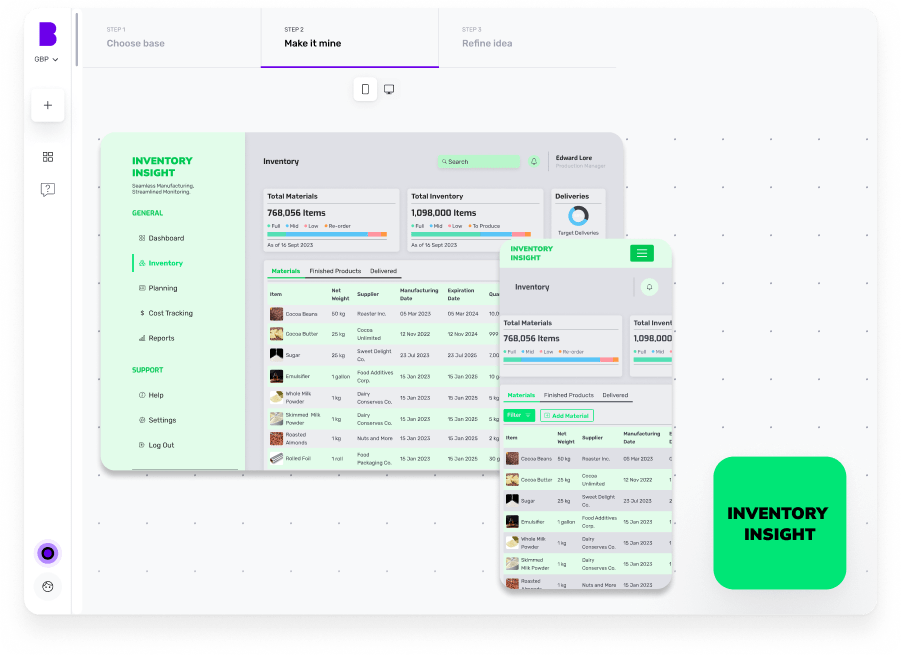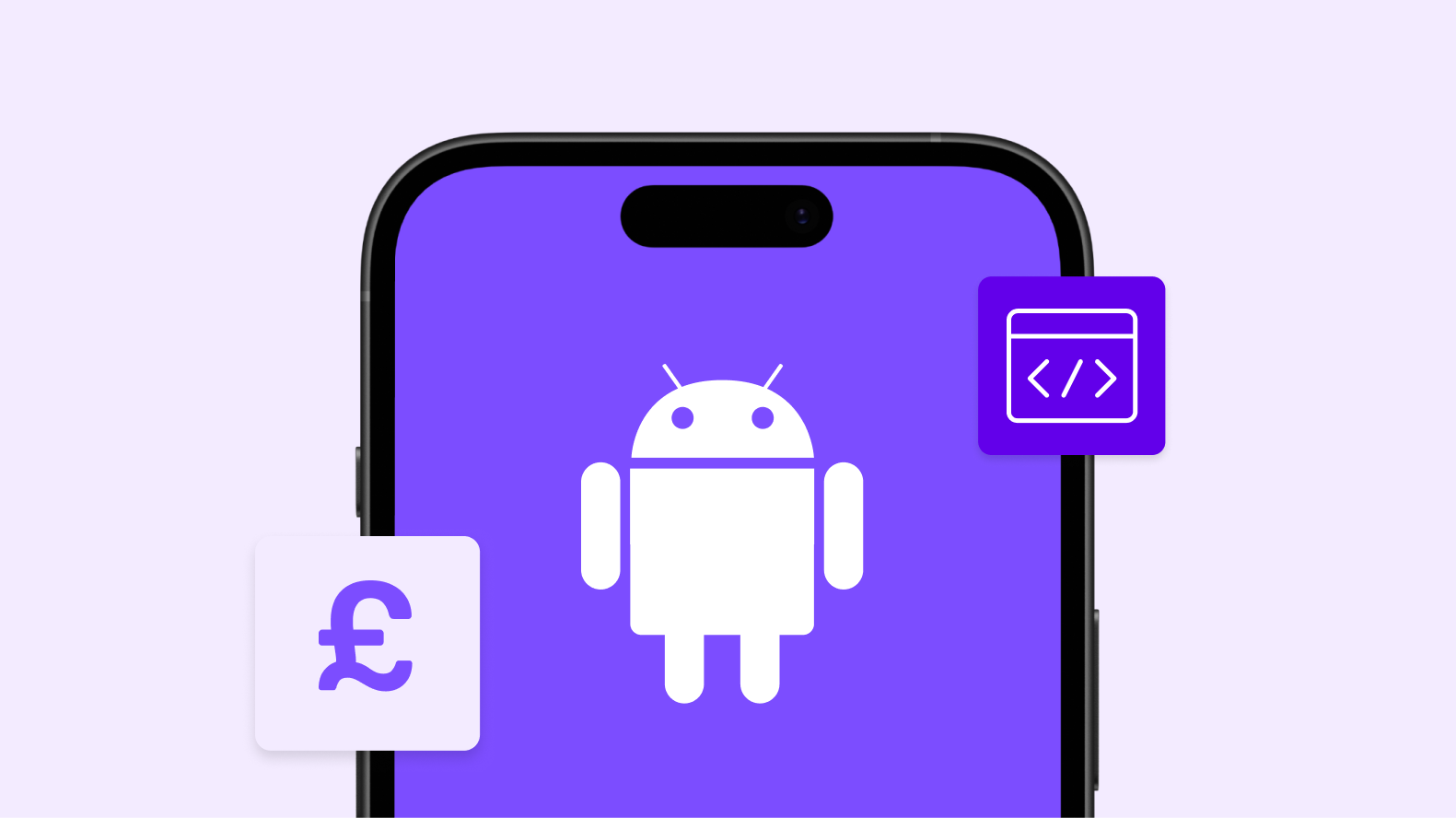With 3.4 billion Android devices in use today, it’s clear that if you are a business owner or an entrepreneur, you can have a greater market presence through an Android mobile app.
However, there's no one-size-fits-all method for estimating the cost of developing a mobile application, as the app development process might seem like opening a can of worms, with costs varying widely due to countless factors to consider.
In this blog, we’ll look at the factors that affect your Android app development costs.
Plus, we bring you an improved solution with upfront pricing and clear timelines to solve it all.
Now, let’s embark on this journey together.
Factors contributing to Android mobile app development cost
When you are developing an Android app, there are several key aspects which might influence the cost of your app. Let’s have a look at them briefly here. 👇
Level of app complexity
The cost of building an app varies greatly depending on its complexity, features and platform. Simple apps can start around $10,000, while complex ones can exceed $70,000. The hourly rates for app developers also vary, from $20 to $150 per hour.
Simple apps
Simple apps with basic features usually cost $10,000 to $30,000. These apps usually have a straightforward user interface, minimal features and need less complex backend development.
Some of the examples of simple apps include to-do list apps, simple calculators or basic informational apps.
Mid-level apps
Mid-level apps generally cost around $30,000 to $50,000. These apps have advanced user interfaces, some level of backend development and additional features like user authentication, basic data storage and simple Application Programming Interfaces (APIs).
Examples of mid-level apps include social media apps, ecommerce platforms with limited features or fitness tracking apps.
Complex apps
Complex apps with advanced features and integrations can cost you $70,000 or more. These apps often need extensive backend development, complex user interfaces and advanced features such as real-time data processing, Machine Learning or extensive third-party integrations. Examples include enterprise-level applications and ecommerce platforms.
Type and category Android of app
The app's type and category also play a big role in deciding how much it'll cost. Different categories have a varied set of requirements.
- Ecommerce apps -shopping and ecommerce platforms need secure payment gateways, inventory management and user authentication. So, they might be complex and costly to build.
- To-do apps -to-do apps need basic features and are far less complex to design and build, making them less costly.
- Social media apps - these apps often need real-time messaging, user profiles and content sharing features. Therefore, they charge more for development.
- Gaming Apps: these apps often need complex graphics, animations and game logic to be integrated. So, the app costs might escalate.
Features in the Android app
Some basic features in your Android app, might directly impact the price of an app. Some examples include:
- In-app purchases and subscriptions - implementing in-app purchases or subscription models requires integrating secure payment gateways and managing user transactions. This adds complexity to the development process and increases costs.
- Advanced Analytics - implementing advanced analytics to track user behaviour, app performance and other custom metrics can provide valuable insights but also adds to the development cost.
- Multimedia support -integrating audio and video playback, recording or streaming features can be resource-intensive and need specialised development skills and cost.
- Real-time features -features like chat, live streaming or real-time data updates need sophisticated backend infrastructure and can be costly to implement and maintain. Also, implementing features like push notifications to keep users engaged can add to the development cost, especially if custom notifications are required.
- Complex functionality -apps with a wide range of features, such as social media integration, in-app messaging or advanced search functionalities, significantly need more development time and resources.
Design in the app
The design of the app, including both UI (User Interface) and UX (User Experience), is crucial for user engagement and satisfaction. Design costs can vary based on:
- Custom vs. template design - custom graphics and animations can enhance user experience but also increase development time and cost. Standard UI elements are quicker and cheaper to implement.
- Complexity of UI/UX -a straightforward, minimalist design is generally less expensive to implement than a highly complex, feature-rich interface. The more intricate the design, the more time and resources are required for development.
- Branding and aesthetics - ensuring that the app's design aligns with the brand's visual identity, requires additional effort, especially if the brand guidelines are complex or if the app needs to integrate with other branded materials.
App deployment on Play Store
Android apps’ deployment on the Google Play Store involves several steps and costs:
- Developer account fee- Google charges a one-time registration fee of $25 to create a developer account. This is a mandatory cost for any developer looking to publish an app on the Play Store.
- Testing and Quality Assurance -the app needs to undergo rigorous testing to ensure it's bug-free and performs well. This includes testing in beta, which can take more time and resources.
- App Store Optimisation (ASO) -optimising the app for better visibility on the Play Store involves creating compelling descriptions, selecting relevant keywords and designing eye-catching screenshots and icons, which might add to the overall cost.
Android app maintenance
App maintenance is essential to keep the app running smoothly and to address any issues that arise. Maintenance costs include:
- Bug fixes and updates - post-launch, users may encounter bugs or issues that were not detected during initial testing. Fixing these bugs requires an ongoing development effort, which adds to the overall cost.
- Regular updates - keeping the app up to-date with the latest Android OS versions and security patches is crucial. Each update may require additional development and testing, increasing maintenance costs.
- Feature enhancements - incorporating user feedback to improve existing features or add new ones, can enhance the app's value but also increase development costs.
- Market trends - staying competitive often means adding new features to keep up with market trends and user expectations. This ongoing development can be a significant cost factor.
- Performance optimisation - as the app evolves, performance optimisation becomes necessary to ensure it runs smoothly on various devices. This may involve code refactoring, optimising resource usage and improving load times, all of which add to the development cost.
Android app development team
The composition and expertise of the development team significantly impact cost. Factors to consider include:
- Team size - larger teams can handle more complex projects but come at a higher cost.
- Expertise and experience - more experienced developers may charge higher rates but can complete the project more efficiently.
- Location - development teams in regions with higher living costs typically charge more.
- Project management - effective project management ensures timely delivery and can help control costs.
Comparative Analysis of Android vs iOS App Development Cost
Both Android and iOS app development have separate timelines. Similarly, they might also have different costs. So, here's a comparative analysis of Android vsiOS app development costs. 👇
Android app | iOS app | |
Cost of app development | Higher due to longer development time and more extensive app tests. Costs can vary based on the complexity of the app and the need to support a wide range of devices | Lower due to shorter development time and less extensive app tests. Costs can still be significant, especially for complex apps, but the controlled ecosystem reduces some variables |
App design | More complex due to the need to accommodate a wide variety of screen sizes and resolutions. Hence, requires more adaptive design principles | Simpler due to a more standardised set of devices and screen sizes. So, design guidelines are more straightforward and consistent |
Testing process | More extensive and time-consuming due to the variety of devices, screen sizes and OS versions. Requires thorough testing to ensure compatibility and performance | Less extensive due to a more controlled environment with fewer device variations. Testing is generally faster and more straightforward |
App launch | Easier and faster process to launch on Google Play Store. One-time fee of $25 and a more lenient review process | More stringent review process by Apple, which can take longer. Annual fee of $99 for the Apple App Store. Higher quality control ensures a more polished app experience |
Strategic options for Android app development
There are many strategic options for developing your Android app, including in-house developers, freelance developers and development agencies:
In-House Android app development
In-house app development offers full control over the development process and timeline, allowing for high levels of customisation tailored to your specific needs.
However, you might need a significant amount of initial investment in hiring and training a development team. This approach is best suited for if you run a company with long-term app development needs.
Freelance Android app developers
Freelance Android app developers might offer you a cost-effective and flexible solution for specific projects or tasks, which provides access to specialised skills and expertise.
However, you might face higher risks of project delays or quality issues and need more hands-on management and oversight. This approach is ideal if you run small to specialised medium-sized projects and businesses with limited budgets and are looking for specialised skills on a project basis.
App development agencies
App development agencies provide you an access to a team of experienced developers and specialists. They handle professional project management and Quality Assurance, ensuring a smooth development process.
This approach is ideal for you, if you run large or complex projects and businesses seeking end-to-end development services with ongoing support and maintenance. However, it tends to be more expensive than other options.
Craft it with Builder.ai
Lastly, established and successful app development platforms like Builder.ai can be your one-step solution to make your dream Android app a reality.
Whether it’s education, retail, healthcare or anything, Builder.ai provides the customisation and scalability of professional developers along with the efficiency and cost-effectiveness of no-code builders. This makes it an ideal choice for your Android app development journey.
🕰️Fast turnaround time -our library of 650+ features means that most of the development work is done before we even start, so we can offer highly competitive timelines. You choose the features that best fit your app, and we can work on tailoring them to your needs.
💻Code that’s yours to keep - your idea is all yours, and we want it to stay that way. Once our network of clever developers have helped customise your app just the way you want it, we’ll send you your code repository to keep.
💸Transparent pricing -unlike some traditional app developers who price as they go, we make things simple by giving each of our features a set price, and providing you a guaranteed price upfront.
💰Save on cloud services -you can also save through our cloud billing optimisation services, powered by automation. Our analysis tool predicts your usage and assists you in reducing your cloud expenditure.
🧑💻Ongoing maintenance with Studio One - we’ll never leave your app high and dry. Studio One is our subscription service that provides 24/7 maintenance for your app and the ability to scale your project with additional features and functionality at any time.
Create robust custom software today
100s of businesses trust us to help them scale.
Book a demoBy proceeding you agree to Builder.ai’s privacy policy
and terms and conditions

How to cut Android app development cost?
Here are some well-defined strategies through which you can cut down on your Android app development costs.
Create Product Requirement Document (PRD)
A well-defined PRD is crucial for your app development project. It'll outline the app's purpose, target audience, features and functionalities, which makes sure that everyone involved in the project is aligned to the goal.
Secondly, it might also help your app developers to plan effectively, leading to better resource allocation and reduced development time.
Prioritise features
In this step, you should prioritise features which are essential and avoid unnecessary expenses. So, identify the core features that are essential for the app’s functionality and UX over non-essential features and gather user feedback to understand what features they value most. This ensures you’re investing in features that drive user engagement.
Build a Minimum Viable Product (MVP)
An MVP is a version of the app with just enough features to satisfy your early customers and provide feedback for future product development. An MVP allows a quick launch, reduced development time and costs.
Additionally, it helps you validate the app’s concept and market demand, which ensures that you’re investing in a viable product.
Pick the correct development platform
A right development platform can significantly impact your app development costs. For example, native development offers the best performance and user experience — but it can be more expensive due to the need for specialised skills.
Similarly, hybrid apps use web technologies wrapped in a native container. They're generally cheaper to develop but may not offer the same performance as native apps.
Conclusion
As you now know that the cost it takes to develop an Android app can vary significantly based on its complexity, the features required and the development process itself.
From initial planning and design to development, testing and deployment, each stage plays a crucial role in determining the overall cost. While simple Android apps may take $10,000-$30,000, more complex Android projects can extend around $70,000 or more.
This is where working with the best in the industry significantly increases your chances of successfully building a high-quality app.
Builder.ai helps you build your app efficiently. We:
✅ - Assign you a dedicated project manager, who keeps all stakeholders on your app project aligned and on track; you never need to speak to a software developer or write a single line of code
✅ - Speed up development timeby giving you access to a comprehensive library of reusable features, fitted together by AI
✅ - Give you upfront costs and competitive timelines so your project stays under control
If you like that, please get in touch to start your Android app project today 👇
Create robust custom software today
100s of businesses trust us to help them scale.
Book a demoBy proceeding you agree to Builder.ai’s privacy policy
and terms and conditions

Stories published by the editorial team at Builder.ai.










 Facebook
Facebook X
X LinkedIn
LinkedIn YouTube
YouTube Instagram
Instagram RSS
RSS


